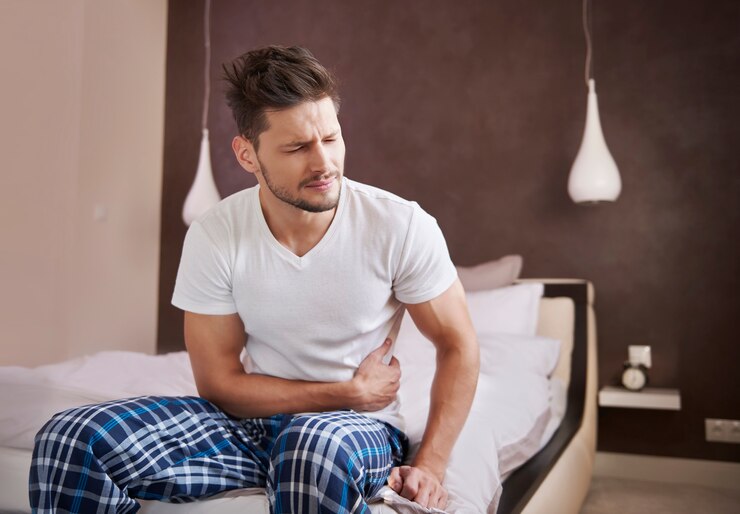Imagine you’re enjoying a movie with friends, laughing and having a great time. Suddenly, a strong urge to use the restroom hits you, and you barely make it in time. This scenario might happen occasionally for everyone, but if it’s a frequent occurrence, you might be experiencing overactive bladder (OAB).
What is Overactive Bladder (OAB)?
OAB is a common condition that affects millions of people worldwide. It’s characterized by a sudden and urgent need to urinate, often happening even when the bladder isn’t full. This urgency can lead to frequent urination throughout the day and night, sometimes even causing involuntary urine leakage (incontinence).
Here’s a breakdown of the key symptoms of OAB:
- Urgency: The overwhelming feeling that you need to urinate right away, with difficulty delaying urination.
- Frequency: Urinating more often than usual, typically eight or more times a day.
- Nocturia: Waking up at night to urinate (more than once).
- Urinary incontinence: Leaking urine unintentionally, which can happen alongside urgency.
It’s important to note that not everyone with OAB experiences all these symptoms. Some people might just have urgency or frequency, while others might deal with incontinence as well.
Real-Life Example: Maria’s Story
Maria, a 42-year-old accountant, used to love going on hikes with her friends. Lately, however, the fear of not finding a restroom quickly enough had turned those hikes into stressful experiences. Frequent and urgent urges to urinate made her constantly on edge, impacting her enjoyment of outdoor activities. After discussing her symptoms with her doctor, Maria was diagnosed with OAB. With treatment and lifestyle changes, she was able to regain control of her bladder and get back to enjoying her favorite hikes.
What Causes Overactive Bladder (OAB)?
While the exact cause of OAB isn’t fully understood, several factors can contribute to it:
- Involuntary Bladder Muscle Contractions: Normally, your bladder muscles relax as it fills with urine. In OAB, these muscles contract involuntarily, even when the bladder isn’t full, triggering the urge to urinate.
- Nerve Signaling Issues: Signals between your bladder and brain might be disrupted, leading your brain to believe your bladder is full when it’s not.
- Underlying Medical Conditions: Certain medical conditions like diabetes, neurological disorders, and urinary tract infections (UTIs) can contribute to OAB.
- Lifestyle Factors: Drinking excessive caffeine or alcohol, smoking, and being overweight can irritate the bladder and worsen OAB symptoms.
Risk Factors for Overactive Bladder (OAB)
While anyone can develop OAB, certain factors increase your risk:
- Age: OAB is more common in older adults, but it can affect younger people as well.
- Gender: Women are more likely to experience OAB than men, especially after childbirth or during menopause.
- Neurological Conditions: People with neurological conditions like Parkinson’s disease or multiple sclerosis are at higher risk for OAB.
- Prostate Issues: Men with enlarged prostate glands might experience OAB due to bladder obstruction.
How is Overactive Bladder (OAB) Diagnosed?
If you suspect you might have OAB, talking to your doctor is crucial. They will discuss your symptoms, medical history, and lifestyle habits. A physical exam and urine tests might be done to rule out other conditions like UTIs. Your doctor might also recommend additional tests like a cystoscopy (visual examination of the bladder) or urodynamic testing (evaluates bladder function).
Treatment Options for Overactive Bladder (OAB)
The good news is that OAB is a manageable condition. There are various treatment options available, and your doctor will recommend the best approach based on your specific needs and the severity of your symptoms. Here are some common treatment options:
- Lifestyle Changes: Simple lifestyle modifications can significantly improve OAB symptoms. These include practicing bladder training (holding urine for gradually longer intervals), managing fluid intake, and avoiding bladder irritants like caffeine and alcohol.
- Pelvic Floor Muscle Exercises: These exercises strengthen the muscles that support your bladder, improving your ability to control urination.
- Medications: Several medications can help relax bladder muscles and reduce urgency. Anticholinergics are commonly used medications for OAB, but they might have side effects like dry mouth or constipation.
- Neuromodulation: In some cases, electrical stimulation might be used to regulate nerve signals controlling the bladder.
- Surgery: Surgery is usually considered a last resort for OAB that doesn’t respond to other treatments.
Living with Overactive Bladder (OAB)
OAB can be frustrating and interfere with your daily activities. However, with proper diagnosis and treatment
